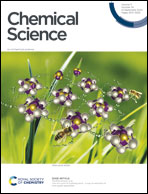Molecular assemblers: molecular machines performing chemical synthesis
Abstract
Molecular assemblers were proposed by K. Eric Drexler in 1986, based on the ideas of R. Feynman. In his (quite lurid) book “Engines of Creation: The Coming Era of Nanotechnology” and follow-up publications Drexler proposes molecular machines capable of positioning reactive molecules with atomic precision and to build larger, more sophisticated structures via mechanosynthesis. These imaginative visions started a hot controversy. The debate culminated in a cover story of Chemical & Engineering News in 2003 () with the key question: “Are molecular assemblers – devices capable of positioning atoms and molecules for precisely defined reactions – possible?” with Drexler as the proponent and Nobelist Richard E. Smalley being the opponent. Smalley raised two major objections: the “fat fingers” and the “sticky fingers” problem. To grab and guide each individual atom the assembler must have many nano-fingers. Smalley argued that there is just not enough room in the nanometer-sized reaction region to accommodate all the fingers of all the manipulators necessary to have complete control of the chemistry. The sticky finger issue arises from the problem that …“the atoms of the manipulator hands will adhere to the atom that is being moved. So it will often be impossible to release the building block in precisely the right spot.” Smalley concludes that the fat and the sticky finger problems are fundamental and cannot be avoided. While some of the statements of E. Drexler are bold and probably not very realistic, his ideas are inspiring and might be a good starting point to assess on how far laboratory chemistry has advanced towards real “molecular assemblers” within the last two decades.



 Please wait while we load your content...
Please wait while we load your content...